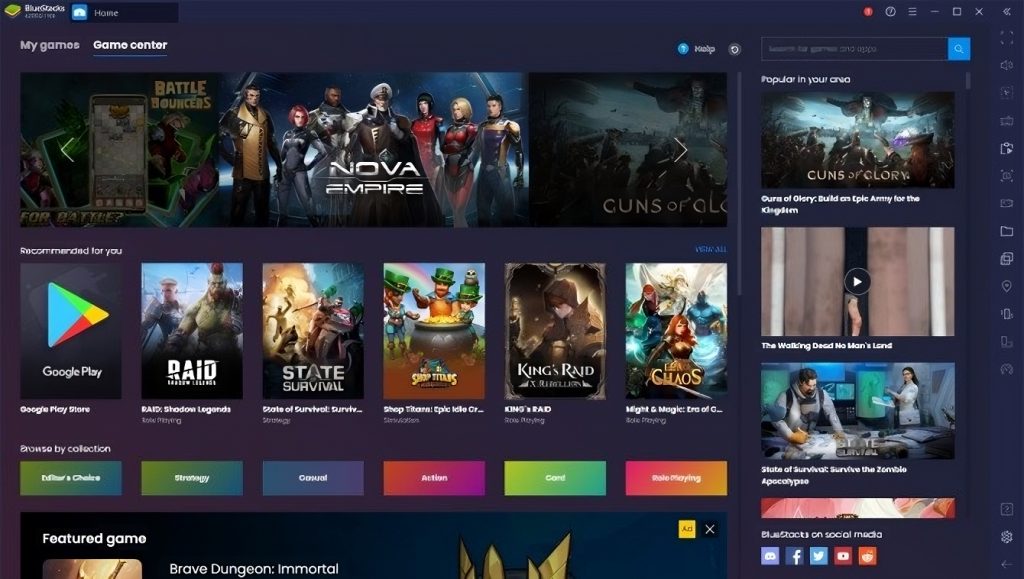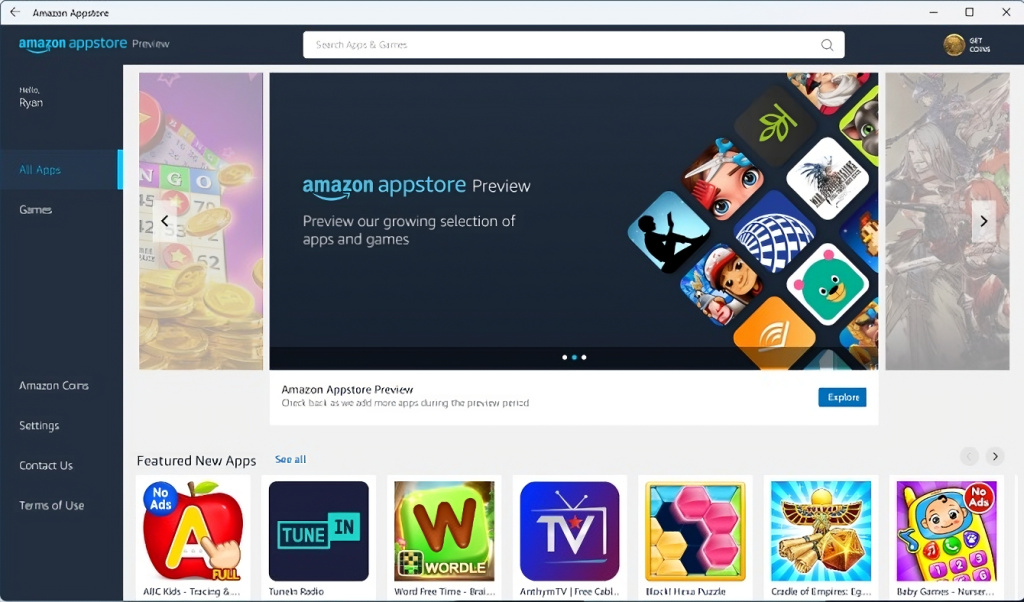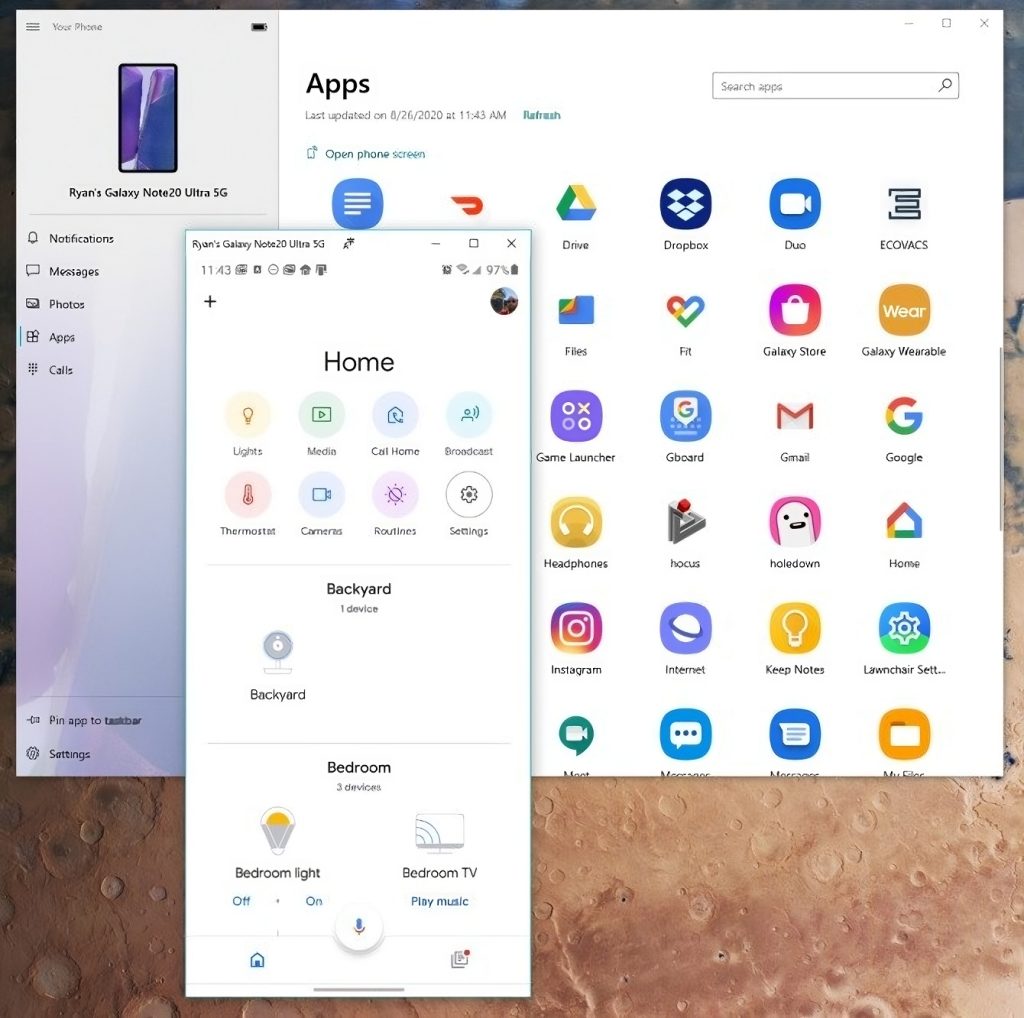You don’t need an Android phone to run apps designed for that platform.
Add in all the smartphones, tablets, watches and other various devices running Android and you have the biggest computing platform on Earth. The prevalence of Android has encouraged the development of great apps, some of which are not available on iOS. Even in this age of giant phones, you may occasionally want to use those apps on a larger screen, like the one attached to your Windows PC. Fortunately, you can run Android apps on your PC with a little work. There are several different ways to do this, each of which has its strengths and weaknesses.
Android Studio
One way to run Android apps on your computer is to go through the Android emulator released by Google as part of the official Android Studio. The emulator can be used to create virtual devices running any version of Android you want with different resolutions and hardware configurations. This developer-oriented approach assumes that you need to test the application in development, so the setup process is a bit complicated.
You’ll need to download the installer from Google’s site and go through the setup process to get the platforms you want—presumably whatever the latest version of Android is (14 at press time; 15 coming out of beta and expected in August). Google has some pre-configured emulation options available in the menu for Pixel devices, but you can also adjust the parameters manually. When you start your virtual machine, you’ll need to install apps, but the emulator is a basic, open-source version of Android – no Google apps included.
Since there is no Play Store, you need to do something to manage files. Grab the APK you want to install (whether it’s Google’s app bundle or something else) and drop the file into the tools folder in your SDK directory. Then use the command line while your AVD is running to type (into that directory) adb install filename.apk. You need to add the application to the application list of your virtual device.
The advantage of this method is that the emulator is unmodified Android directly from the source. Apps will be rendered the same way in the emulator as they are rendered on the devices, and almost everything should work. It’s great for testing app builds before uploading them to test devices. The biggest problem is that the emulator is not hardware accelerated. The apps are slow enough that you don’t want to go this route as an average user.
Bluestacks
BlueStacks only presents itself as a way to run apps, but it actually runs a full (heavily modified) version of Android behind the scenes. Not only that, but it has the Play Store built in, so you have instant access to your purchased content. Adds the title to your list of Google Play devices, masquerading as an Android phone.
The BlueStacks client will load in a desktop window with different application categories such as games, social networks and so on. Clicking on the app or searching does something unexpected – it opens the full Play Store client as it is displayed on tablets. You can navigate this interface just like you would on a real Android device, making it clear that there’s a lot more to BlueStacks than just an “App Player” front end. The main screen in BlueStacks with app categories is just a custom home screen, so replacing it makes BlueStacks feel almost like a regular Android device.

Full Play Store access means you won’t be messing around with sideloading apps, and BlueStacks manages to run apps pretty well (and better if you have a CPU that supports hardware virtualization). Most of the games are playable, but keep in mind that you will have trouble controlling many of them with the mouse. If your computer has a touch screen, you can still use apps and games that rely on more than one touch input. BlueStacks can essentially turn a Windows tablet PC into a part-time Android tablet.
The biggest problem with BlueStacks is that it doesn’t use the stock Android version. Any changes made by the company to make the apps work on the computer can cause problems – some apps fail to launch or crash unexpectedly. This custom environment is also of little value as a development tool because there’s no guarantee that things will render the same on BlueStacks as they might on a real Android device without all the back-end modifications. It’s also a free service with a $2 subscription for Pro or you can install a few sponsored apps.
Windows Subsystem for Android
If you want to run more apps and games on your PC with minimal effort, you’ll want to use Windows 11. Microsoft partnered with Amazon to implement the Windows Subsystem for Android, which can run Android apps on any powerful enough PC. All you need to do to get started is open the Amazon Appstore client on Windows and sign in.
Amazon’s Appstore for Android is light on desirable apps even on a phone, and the Windows 11 beta has even fewer apps available. However, it is built into Windows and works quite well. Performance is never amazing, but it’s about the same whether you’re using a Kindle app or playing a 3D game.

Because the Windows Subsystem for Android is integrated with the system, you can use it to load and run apps outside of the Amazon store. Note that some applications require Google’s mobile services framework, which is not present in Windows. However, many apps still work.
The first step in sideloading an app is to find an APK installer. We prefer to use APK Mirror, a reputable site with a huge database of free (not pirated) apps. Find Android Subsystem Settings in Windows and enable Developer Mode. This page should also display the IP address that you will need later. You will then need to download Google’s SDK Platform Tools, which will allow you to connect to the Android virtual machine in Windows.
Next, you need to open a command prompt in the platform-tools folder and connect to Android with adb connect IP_address, using the IP address from above. You can then simply use adb install file_path, using the path to the APK file you downloaded. Some systems require you to re-enter the IP address, as shown below.

Sideloaded Android apps appear in your Windows apps list just like apps installed through the Amazon Appstore.
Link to Windows
Some Android phones (mainly Samsung devices) have improved support for Microsoft’s Your Phone Windows client, offering access to your messages, notifications, photos, and yes, apps. Apps don’t technically run on your computer – they’re mirrored from your phone. However, this system is very elaborate and officially supported. Everything else we’ve talked about so far is limited or not for regular users, but you can be up and running with Link to Windows in minutes.
You will need a phone that works with the latest features of your phone. This includes the Samsung Galaxy S9 and newer, as well as the Microsoft Surface Duo. This feature will expand to more phones in the future, but you can check the current list on Microsoft’s site.

First, make sure you have the Your Phone app on your Windows PC. Next, launch the Link to Windows client on your Samsung phone – it should be available under Advanced Features and from Quick Settings. You will need to scan the QR code on your PC with your phone and sign in to your Microsoft account. And that’s it.
Your list of apps appears in the Your Phone app and you can launch any of them. Your phone does not need to be connected, but Wi-Fi is recommended. Supported devices running Android 11 or higher can run multiple apps side-by-side on Windows, but keep in mind that less powerful phones will be slow with more than one app running at the same time. Since the apps run on your phone, you don’t have to worry about incompatibilities or missing Google components like you do with Windows Subsystem for Android.
So what is the best way?
If you need to test something with the intention of releasing an app for Android devices, an emulator is still the best way to go. It is best suited for developers because configuration and application management are complicated. It’s slow, but you’ll be able to see how things will work in the right place. If you’re interested in running more than a few apps on your PC to use and enjoy, Windows Subsystem for Android is the best solution for most people.
If you happen to have a phone compatible with Microsoft’s latest Your Phone features, it’s by far the easiest way to download Android apps to your computer. Many of these phones are expensive, so it’s not worth buying one just for this use case. However, if you’re in need of an upgrade and running Android apps on your PC is high on your list of priorities, this may sway your decision.
The post How to run Android applications on your Windows PC appeared first on ITNetwork.
Source: www.itnetwork.rs


